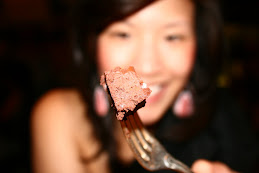[bop bop in the office] as much as my new mini ipod makes me concentrate at work - drowning out the noise of others' conversations, the funny old man who burps and farts without realizing it, and regular cube bustle - it makes me want to sing! how can you not bop to BEP's "let's get retarded", and how can you not sing to On The Rocks' rendition of Coldplay's "Yellow"? (thanks steve, i listen to it ALL the time -- isn't peanut vendor just the funniest song?)i had to seriously stop myself from singing singing singing :) it's kind of a nice feeling -- but boy could it potentially be embarrasing. xP
- yesterday's bulb relit -
just b/c it was interesting to me and i got inspired by "golf for dummies"
A brief history of golf
There is general agreement that the Scots were the earliest of golf addicts but who actually invented the game is open to debate. We know that golf has existed for at least 500 years because James II of Scotland, in an Act of Parliament dated March 6, 1457, had golf and football banned because these sports were interfering too much with archery practice sorely needed by the loyal defenders of the Scottish realm! It has been suggested that bored shepherds tending flocks of sheep near St. Andrews became adept at hitting rounded stones into rabbits holes with their wooden crooks. And so a legend that persists to this day was born!
The very earliest club makers were thought to be the skilled craftsmen who produced bows and arrows and other implements of war! The first authentic record of a club maker was in 1603 when William Mayne was appointed to the court of James I of England to make golf clubs for the king and his coherts! Two Scottish club makers are recognized from the late 1600s, Andrew Dickson of Leith and Henry Mill of St. Andrews. These clubs featured carved wooden heads of beech, holly, dogwood, pear or apple and spliced into shafts of ash or hazel to give the club more whip. Improvements were made by filling the back of the head with lead and by putting inserts of leather, horn or bone into the club face.
In 1618, James I of England commissioned James Melvill and an associate to make feathery balls for the court. It was an exclusive grant for 21 years with the balls stamped by Melvill and any other ball found in the Kingdom not bearing his trademark were confiscated! You may well be surprised at the distances achieved by these feathery balls. In dry weather, a well struck feather ball could travel 180 yards (165 m) but when wet only about 150 yards (135 m). The gutty as it was known was not an instant success as the smooth ball tended to duck in flight. Players soon found that its performance improved at the end of a round when the ball received some nicks and scratches. Therefore, newly molded balls were scored all over with a saddler's hammer with such good playing results that the demise of the feathery was certain.
Modern balls have a more durable cover of balata or surlyn and various solid core balls with new synthetics have become popular. As well, we have seen the art of club making go from the original wooden clubs, to forged irons, then steel shafts and finally all manner of metal heads with many types of synthetic shafts. Technology has done wonders for the average golfer but practice, dedication and raw talent still remain a factor as witnessed by Greg Norman's amazing 63 at Augusta on April 11, 1996, during the first round of the US Masters Championship.
-the end-
skip to main |
skip to sidebar

i'm a sucker for sweets.
it's best to know what you are looking for before you look for it.

i'm a sucker for sweets.
What's shaking?
- dumdeedumdi
- D is for dynamite, delicious, doze-averse, and delirious Di!
No comments:
Post a Comment